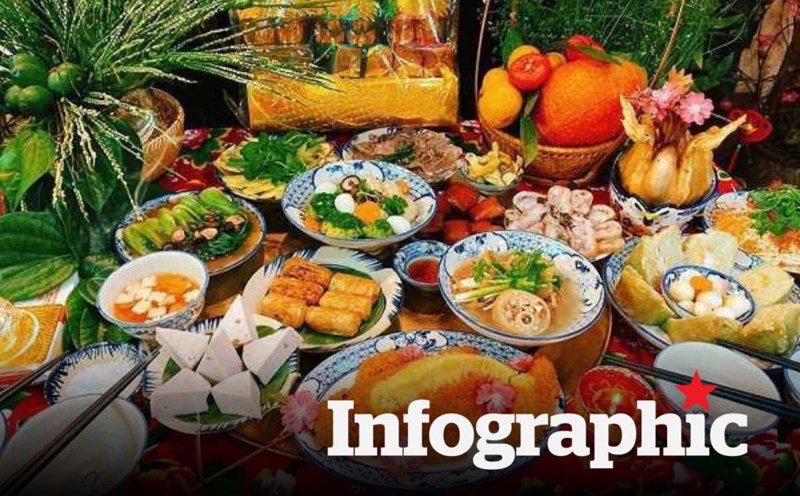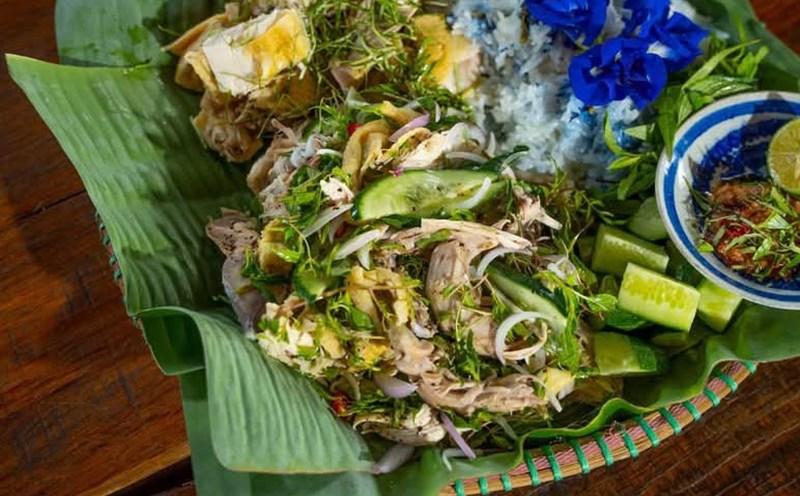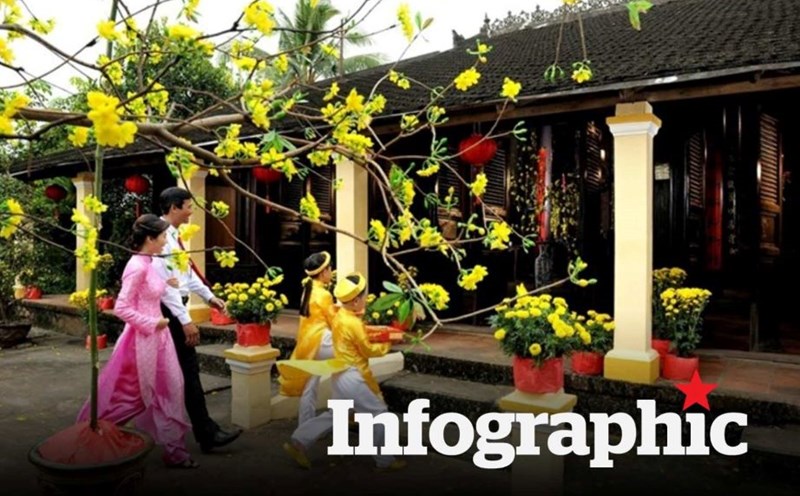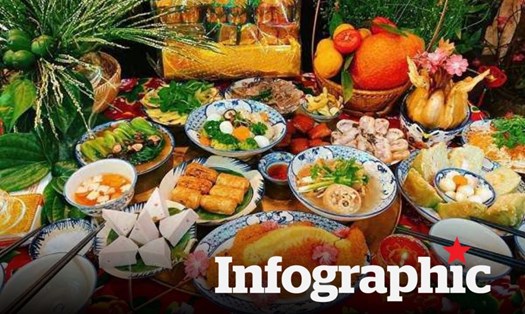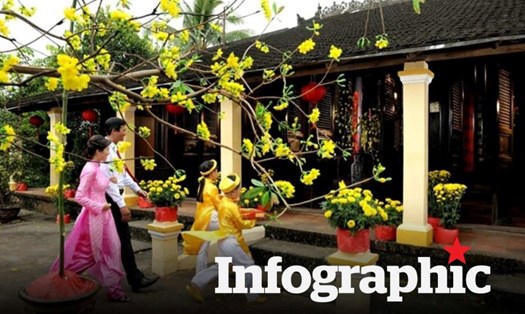During Tet in the past, just going around the houses of close friends in the New Hamlet was enough to taste all the cakes and fruits from three regions. This is the land where people from all over the country come to settle down, bringing with them their customs and traditional dishes from their hometown.
People called the place where we were born and raised New Hamlet. Because the hamlet was a gathering place for people who went to build a new economy. At that time, every now and then, a new house was built in the hamlet, with people from the North, Central, and South. We children went to school together in the simple, newly built village schools.
Because they like to imitate, some parents from the North have a Southern accent, while others from the West speak fluently as if they have a B in Cantonese. Even eating and drinking habits, which are different, are sometimes learned from each other and brought back to their home, most clearly during Tet.
Tet in the New Hamlet always comes with the season of changing cashew leaves. At that time, almost every house in the hamlet planted this tree. When the weather turned cold, the whole hamlet was covered with yellow leaves. Adults and children together swept the leaves, cleaned the garden to welcome Tet and harvested cashew nuts.
The dry leaves were set on fire. The pungent smell of smoke enveloping the successive cashew gardens was a sign that Tet was coming. When neighbors saw someone burning the leaves, they would stop and ask a few friendly questions: “Is this year’s Tet big, uncle?”, “Is this year’s crop bearing fruit, brother?” or simply, “How are the cashews this year?”. Hearing each other’s questions, one could tell that the neighborhood was full of people from all over.
The children of the first generation of the New Quarter enjoyed the afternoon of the 30th of Tet the most - when everything was almost done, and they were no longer ordered around by adults. We often gathered at Nam's house to watch his mother make banh thuan. I remember the first time I went to his house, I asked in confusion: "What kind of cake is banh thuan?". Nam's eyes widened in surprise: "You don't know about banh thuan?". I retorted: "Then why don't you know about banh rom in my hometown?".
People of Quang origin like Nam’s family do not make banh rom to eat Tet, but instead make banh it. Making banh it is very laborious, the filling has to be stir-fried until it becomes soft. I argued: “It takes so much work, why don’t you make it bigger to make it less tiring?” “That’s why it’s called banh it, if you make it bigger, you’ll call it a lot of banh it,” Cuong argued. He was also a “Northern hybrid”, but because he was close to Nam, he became “Quangized”.
Cuong seemed to have a strong passion for banh thuan. He sat attentively watching Nam's mother make the cakes and then insisted on borrowing the bronze mold to bring home and show his mother how to make banh thuan for Tet. The first year, Cuong's banh thuan was no different from a bad baked egg, but gradually, the cakes became more delicious, just like the ones made by Quang people.
At that time, the neighborhood had a little girl named Xuan who had just moved from the West. She invited us to come over to eat Banh Tet for Tet. We thought it was something new, and every family had Banh Tet, until her mother brought out a plate of Banh Tet with banana filling and a very Western-style invitation: "You guys really eat it". Everyone was surprised because the purple banana filling was soft and fragrant, completely different from the usual green bean and fatty meat filling. Little Xuan proudly said: "Eat it, our family made a whole one".
In my family, my mother often cooks very Northern sweet soup to treat guests during Tet. I am proud that Nam and his friends do not know. When he heard about sweet soup, he immediately denied it: "Why do you put sweet soup in the pot? Do you put fish sauce in it?". However, after trying it a few times, every time he comes to my house for Tet, Nam imitates the Northern accent: "Uncle, please give me a bowl of sweet soup".
Tet in Xom Moi is like an exciting culinary tour of three regions. Just walking past a friend’s house is like traveling to another country. But sometimes, with a childish, fun-loving soul, I am afraid of my friends’ real long trips, afraid of the seasons when cashews are in season and have good prices.
Because when they have money, during Tet, people in Xom Moi take the bus to visit their hometown. The group of friends will be missing a few people. Residents often still struggle with the concept of visiting their homeland on important occasions. In Xom Moi, prosperous Tets are Tets with a loss of joy. Smelling the smoke of burning leaves on a cold afternoon, one feels lonely and sad because a close friend is missing.
Later, when we grew up, we chose strange lands to make a living. During Tet, we also longed to return to the New Village to meet our friends and celebrate Tet like our parents longed to return to their hometowns in the far away North or Central regions.
I suddenly realized that Xom Moi is now just a very old name. For our generation, this place of birth and growth has become our homeland.
It turns out that any land, when attached to long enough, is considered a homeland. Like a tree, when uprooted to another place, will take root there and live, thanks to the years of accumulation, it will become the source.
Article from the Central Highlands Spring Labor publication 2025

